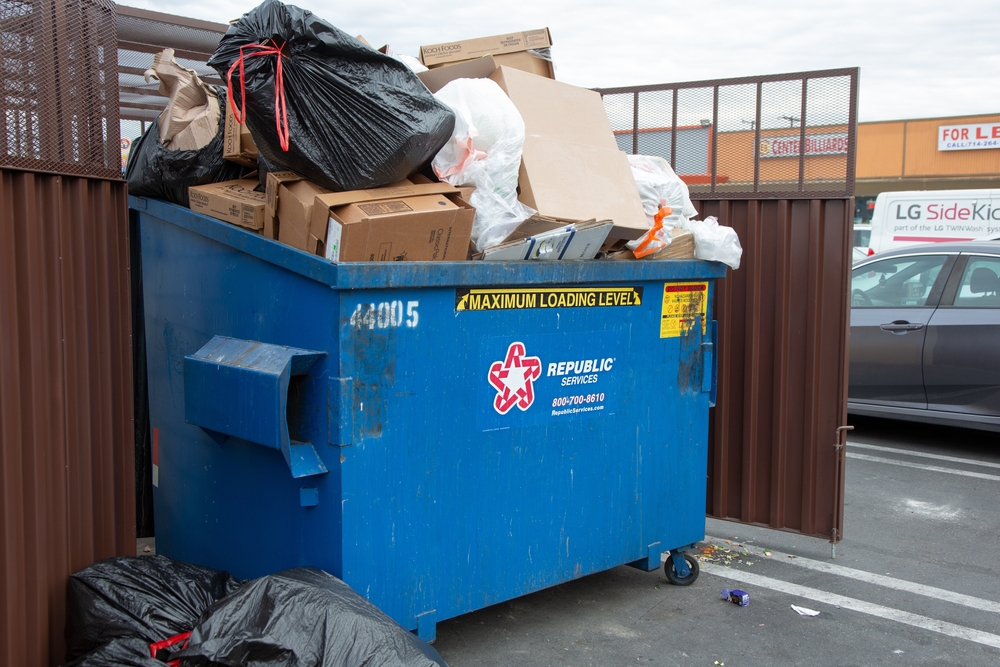For the last few years, many “big box” retailers have found themselves the subject of hazardous waste enforcement suits after California enforcement agencies conducted “dumpster dive” inspections to determine exactly what kind of waste is being disposed of by these companies.
These retailers include Target Corp., Wal-Mart Stores Inc., Whole Foods Market California Inc., and Home Depot U.S.A.
And recently, settlements were announced with the Ritz-Carlton Hotel Co. and United Parcel Service of America Inc. (UPS), to name just a few. UPS and many others, including Macy’s Retail Holdings, Inc., settled with the EPA in federal hazardous waste enforcement actions.
The variety of industries involved shows that no one is exempt from hazardous waste enforcement actions.
The types of items discovered in the California dumpster inspections included many items commonly found in household trash:
- Aerosol cans
- Cosmetics
- Personal care products
- Cleaning and disinfection products
- Small batteries
- Small consumer electronics, including key fobs and ear buds
But, when these “typical consumer items … are disposed of by commercial enterprises, different rules apply as many consumer items are considered to be ‘hazardous waste’ under California’s unique hazardous waste laws,” says Buchalter PC in a Lexology article. “Often, items with just small amounts of residual material nonetheless fail to qualify as ‘empty’ under California’s particular regulatory definitions, precluding their disposal in the local landfill. These, along with many customer returns and other items that may be broken or leaking, must be managed as ‘hazardous waste.’”
California hazardous waste regs
In California, hazardous waste generators are required to report to their local regulator the hazardous waste they produce using the California Environmental Reporting System (CERS). Generators are responsible for determining whether a waste must be stored, transported, and disposed of as a hazardous waste because of its toxicity, reactivity, ignitability, or corrosivity. Questionable wastestreams should be chemically or physically analyzed.
Hazardous waste generators are required to train their personnel to ensure that employees can respond effectively to emergencies. All employees working with and around hazardous waste should be trained in emergency procedures, emergency equipment, and emergency systems. These generators are also required to have an emergency contingency plan that is designed to minimize hazards to human health and the environment from fires, explosions, or an unplanned release of hazardous waste to air, soil, or surface water.
Hazardous waste must be properly manifested and is only allowed to be transported by registered California waste transporters to a state-permitted treatment, storage, or disposal facility.
Storage and labeling requirements
The state also has stringent storage and labeling requirements for hazardous waste, which, at a minimum, according to San Diego County Environment Health and Quality, include:
- Storing in structurally sound tanks or containers in good condition with tight-fitting lids.
- Keeping lids closed when wastes are not being added or removed.
- Accurately labeling with waterproof stickers. Labels must specify the words “Hazardous Waste”; the composition and physical state of the waste; the hazardous properties of the waste (e.g., flammable, reactive, etc.); and the name and address of the generator.
- Labeling with the date that the waste accumulation began on each tank or container. This date is the date waste is first placed into the container or tank.
- Ensuring tanks or containers are in good repair. These tanks and containers must be regularly inspected for deterioration, damage, or leaks.
- Managing waste in a way that minimizes the possibility of spills and escape of waste into the environment.
- Ensuring incompatible waste is not stored in a common storage area without proper separation. Used oil may not be mixed with any other hazardous waste (e.g., solvents).
- Ensuring ignitable or reactive wastes are stored at least 15 meters (50 feet (ft)) from property lines. (This only applies to large quantity generators of hazardous waste.) Ignitable waste must be grounded when material is being added or removed. Local fire departments should be contacted to determine local requirements regarding the handling of flammable wastes.
- Storing on-site according to storage time limits prescribed in the regulations. Storage times vary depending on the monthly generation rate of hazardous waste throughout the entire facility. Generators may store hazardous wastes on-site for 90 or 180 days depending on the volume of waste produced. In some cases, the wastes may be stored for up to 270 days if the off-site treatment, disposal, or storage facility is more than 200 miles away.
Takeaway
Companies operating in California, no matter the industry, are advised to review their California hazardous waste management programs at each location, as the “execution of a well-designed hazardous waste program often falls by the wayside under real world conditions,” stated the Buchalter article. Failure to comply with California’s strict training, labeling, and recordkeeping requirements; strict storage time limits; and hazardous waste manifesting and transportation procedures carries stiff penalties.
With settlements as high as $25 million, it’s important for all types of industry operating in California, even small and midsize businesses, to ensure compliance.

